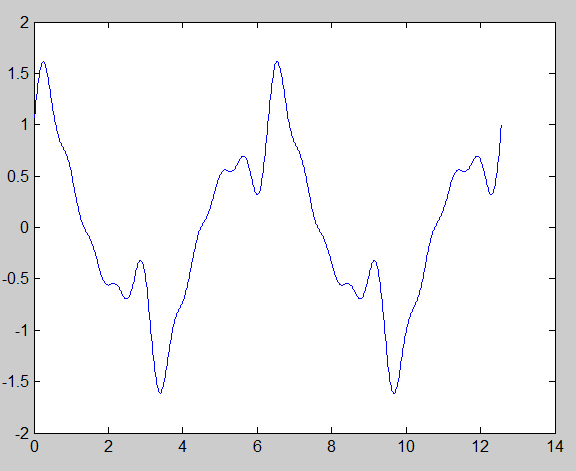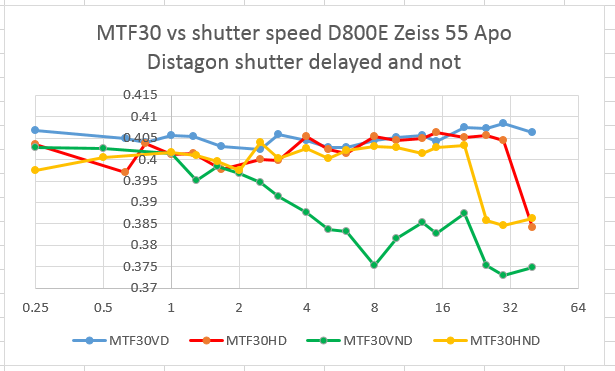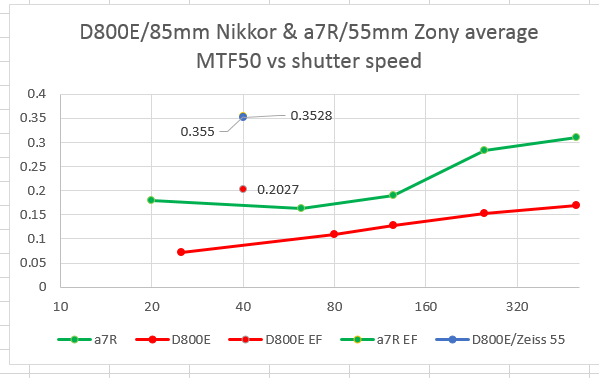Actually, this post applies to MTF analysis in general, whether the camera is on a tripod or not. In the previous post, I said: to get the system’s modulation transfer function (MTF), we perform a Fourier transform on the system’s impulse response, or point-spread function (PSF), and throw away the imaginary part. What do we… [Read More]
Archives for 2014
The intellectual underpinnings of MTF analysis of handheld images
A few days ago, I made a post with a handwaving defense of the use of slanted edge MTF metrics for analyzing handheld image sharpness. Today, I’d like to take another crack at it, this time with more rigor. The upside? A clearer basis for the capabilities and the limitations of the technique. The downside?… [Read More]
D800E vibration testing
A reader has asked if I could take the methods that I developed for the handheld testing and apply them to tripod-mounted testing. The MTF-based technique offers the ability to test more conditions because of its automation, and provides objective, machine-generated results. However, the old procedure, with its visual analysis of ISO 12233 images, is… [Read More]
An accidental handholding test
I think I have very-late-onset dyslexia. I reported yesterday on handholding tests with the Nikon 58mm f/1.4. The graphs were actually of the second set of tests I attempted. When I did the first ones, this was the result: Very strange, I thought. The electronic flash resolution was much lower than I thought it would… [Read More]
Testing handholding
In the fall of 1958, when I was a photographer for my high school newspaper, I borrowed a Linotype font chart from the newspaper office, taped it to the darkroom wall, lit it with two blue-dipped photofloods, metered it with a Weston Master II, and made a bunch of handheld exposures at various shutter speeds… [Read More]
- « Previous Page
- 1
- …
- 46
- 47
- 48
- 49
- 50
- …
- 62
- Next Page »


